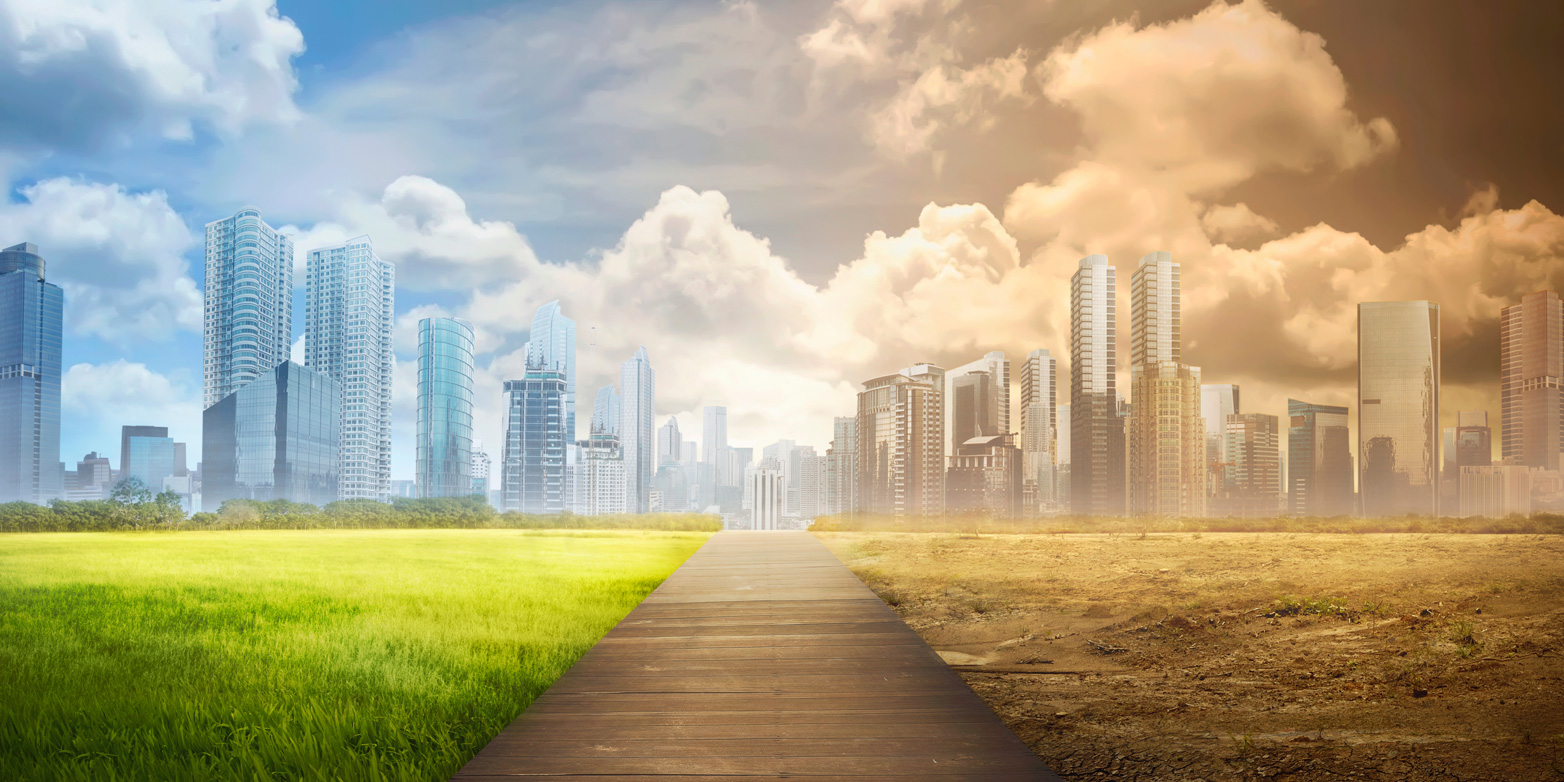How we can adapt to climate change
Thomas Bernauer contributed to the latest IPCC report on adaptation to climate change. He sees nature and good governance as our most important resources for coping with the effects of climate change.

Today, the Intergovernmental Panel on Climate Change (IPCC) presented the second section of the Sixth Assessment Report (AR6) on the state of climate research.1 The first section released last August described the physical basis, causes and extent of climate change (see blog post by Sonja Seneviratne); while the second section deals with the consequences of global warming for the environment and humanity.

I contributed to the new climate report as one of the lead authors of Working Group II. This report is the result of an impressive process: several hundred scientists assessed thousands of scientific publications on the consequences of climate change and on approaches for adapting to it and summarised the current state of knowledge – mainly via video conferences – in this report. Today, the essence of the findings is presented to policymakers and the public.2
The message is clear: climate change poses a threat to human well-being and the health of our planet. Adaptation is urgently required. And it is possible. I consider the following findings to be particularly important.
The consequences of climate change are everywhere
Climate change already has impacts worldwide – our planet has warmed by a global average of about 1.1°C since 1880. The consequences can be found in practically all areas of the environment and life, and are in some cases severe. All geographical areas are affected, from the tropics to the poles, sensitive ecosystems such as coral reefs, forests on land and seagrass meadows and algae forests of the oceans, and also sectors such as water and energy, agriculture, human health and nutrition.
Even if humanity succeeds in reducing greenhouse gas emissions to net zero by 2050 and limiting the temperature increase to 1.5°C, far-reaching risks and damage to environmental systems and people can no longer be avoided in many places. The greatest climate risks are faced by people and the natural environment in regions with the highest temperature increases, and on coasts, along rivers, and in mountain regions.
However, this new report does not merely list risks and damage. Rather it focuses on solutions in terms of adaptation to climate change.
The adaptation gap is growing
It is encouraging that many adaptation activities have recently been initiated, particularly in the areas of flood protection, irrigation and water supply. However, the geographical distribution of these measures is very uneven. In many countries and regions, adaptation processes are already reaching their limits.
A north-south divide is becoming increasingly apparent: in poor and poorly governed countries of the Global South, the “adaptation gap”, the gap between increasing climate risk and the measures taken by society to limit them, is growing much faster.
«Climate adaptation is much more than just new infrastructure – it is a task for society as a whole.»Thomas Bernauer
In the global hotspots, 3.3 billion people are considered to be particularly at risk from climate change. Their vulnerability is heightened by overlapping problems such as poverty, weak, unstable or corrupt governments, lack of trust in authorities, and restricted access to energy, water, sanitation and health services, particularly in informal settlements. In such areas, the number of deaths caused by floods, droughts and storms has been up to 15 times higher than in richer countries over the past decade, reflecting the prevailing climate injustice.
Our strongest weapons
So how can humanity adapt successfully to climate change? The report provides clear answers to this question:
- Nature is one of our most important allies. Stronger nature conservation can help enormously in adapting to climate change risks we are unable to prevent. A healthy planet is essential: it provides us with food and water, secures the livelihoods of people and helps to reduce the risk of disasters.
- Second, I consider climate-resilient development to be particularly important. The term links climate change adaptation and mitigation to the UN Sustainable Development Goals (SDGs). Alongside infrastructure such as flood protection, resilience also calls for the climate-compatible restructuring of agricultural, food and health systems.
- And finally, good governance: well-managed governments that function effectively in acute crises will be a central resource. Good governance helps to fight poverty, corruption and social inequality – and is a fundamental prerequisite for overcoming the adaptation gap.
Rapid social change is needed
As a political scientist, I cannot emphasise often enough that climate adaptation is more than just new infrastructure. It is true that successful adaptation will take money, steel and concrete – but technology alone will not fix it. It is a task for society as a whole, in which political and social institutions and the commitment of us all play a central role.
For all societies, and for Switzerland in particular, which is at risk to be heavily affected by climate change, time is a hugely important factor. Many adaptation processes require long-term investment and structural change. The longer emissions continue to rise unchecked, the less room for manoeuvre and the shorter our window of opportunity to limit unavoidable climate risks.
Reference
1 IPCC Climate Change (2022): Working Group II contribution to the Sixth Assessment Report (AR6): external page Impacts, Adaptation and Vulnerability
2 IPCC (2022). AR6 WGII: external page Summary for policymakers
Comments
No comments yet